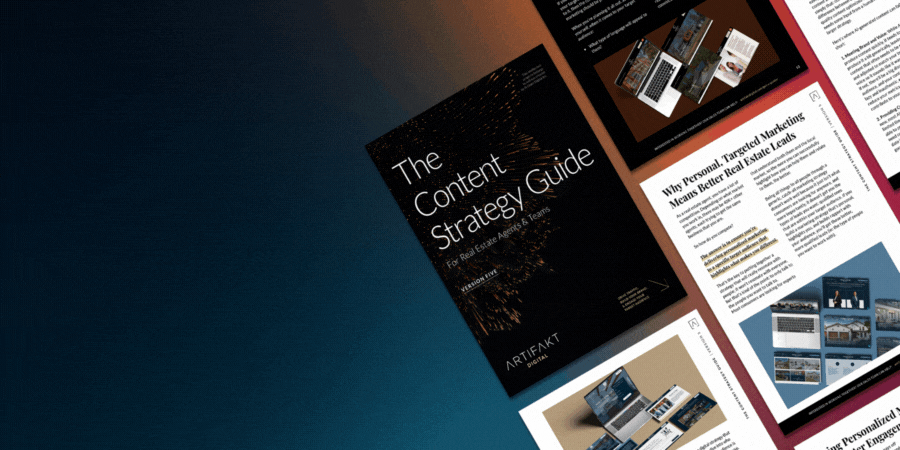Nowadays, you can’t see success in your digital strategy if you don’t have a successful, evolving content strategy in place; the two go hand-in-hand.
And that’s where a content lifecycle plan comes in (and why it’s so important). That’s where you establish a combined, thought-out plan that enables you to build and maintain your overall content lifecycle flow from end to end.
To be successful, your content lifecycle plan should follow these 4 main stages:
Stage 1: Strategy and Planning
The strategy and planning phase is where you put together a plan outlining all of the details around the content you’ll be producing, like:
- The reason you’re producing content,
- Who exactly you’re producing it for,
- The topics of the content you’re producing,
- The format you’ll be producing it in,
- How often you’ll be producing it.
Ideally, you should be able to plan out anywhere from 3-6 months’ worth of content, based on what your audience is actually searching for; and while blog posts and your blog strategy are probably going to be a big part of that, it doesn’t necessarily end there. You could also plan to include additional/new page content, videos, infographics, podcasting, and a lot more.
If you’re not sure how to approach it, a good course of action here is to identify 3-5 individual, specific target audiences and outline 5-10 questions that each of those audiences is asking you, and if your plan is to produce 1 piece of content per week, you have 6 months worth of content.
★ Want to learn more about planning content strategically? Have a look at these posts:
- Planning a Successful Content Strategy for Your Real Estate Website
- Why Your Target Audience Shouldn’t Be Anyone and Everyone
- Creating an Evergreen Real Estate Content Strategy
Stage 2: Production and Content Creation
The production and content creation stage is where you actually do the work to produce all of the content that you’ve planned.
While you certainly don’t need to produce all of it at once, you should have a goal in place to produce your content at regular periods of time, so that it all gets done according to your plan.
★ Want to learn more about content production and creation? Have a look at these posts:
- How to Plan and Produce Content that Attracts and Engages
- Optimizing Your Content for Humans (And Not Just for Search Engines)
- Writing Successful Real Estate Content that Converts
Stage 3: Content Marketing
The content marketing stage is where you develop your plan around how you get your content in front of the right people, at the right time, for the right reasons.
Without a content marketing strategy in place, there isn’t much point to writing your content in the first place as no one will know it exists.
Your content marketing strategy could include pushing your content out through social media, SEO, advertising, and a lot more.
★ Want to learn more about content marketing? Have a look at these posts:
- What it Takes to Build a Solid Content Marketing Strategy
- Metrics to Measure the Success of Your Content Marketing Strategy
- Optimizing Your Content for Humans (And Not Just for Search Engines)
Stage 4: Content Auditing and Reworking
The content auditing and reworking stage is where you look at your published content, determine what’s working and what isn’t working, and then take the necessary steps to improve it. Improving usually means your content will either be deleted or updated.
- If your content is no longer relevant, doesn’t get any visitors at all, and can’t really be updated, you should delete it. For example, old listings or market update posts that are 5+ years old should be deleted.
- If your content is still relevant, gets some traffic, and has a general topic that makes sense to be reworked, you should update it. For example, older posts buying or selling scenarios that can be logically updated should be.
★ Want to learn more about content auditing? Have a look at these posts:
- How (and Why) to Audit Your Real Estate Website’s Content
- Using Pillar Pages to Make Old Content More Accessible
Putting a strong content lifecycle in place will not only help you get the most value out of the content you produce, but also, help your audience get the most value out of it as well, which is a win-win for everyone.
Want to improve your content strategy? Download our Content Strategy Guide for Real Estate Agents. It has practical methods on how to plan, implement, market, and audit a successful real estate content strategy that will deliver results as part of your overall inbound marketing strategy.




